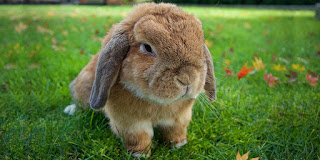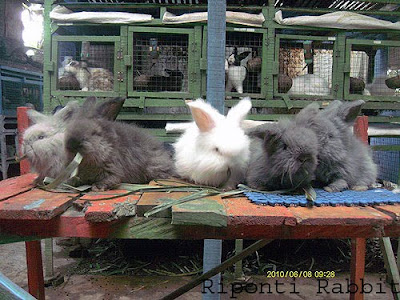HILLARD'S ARTICLE reveals that Easter and its customs have ancient and nearly universal origins, roots which were concerned with the most basic aspects of life.
Our friend the Easter Hare (or Bunny, as you prefer) and his cart of eggs are borne of those roots. To know how this myth became associated with Easter requires that we examine
Easter's association with a number of ancient symbologies.
LUNAR ASPECT
Easter is not really a solar festival, but rather one of the moon. The name Easter comes to us from the Saxon
Eostre (synonymous with the phoenician
Astarte), goddess of the moon. From the most ancient times, this goddess was the measurer of time. Her name as we know it (moon) comes from the Sanskrit mas—from
ma, to measure— and was masculine (as it was in all the Teutonic languages).
Although this seems to suggest some confusion of sex, we can assume from the earliest mythologies that the deities were androgynous and sex depended upon the relationship to causes, whether active or passive. Since the measurement of time was an active process, the full moon was considered masculine.
According to an ancient document
1 the moon as measurer of our days was chosen over the sun, since it seemed most natural to adopt a system that harmonized both the cosmos and humanity. The most likely choice was manifest in the cycle of the moon and the physiological phenomenon of mother and child. The lunar month of 28 days (four weeks of seven days each) gave 13 periods in 364 days, equivalent to the solar year of 52 weeks; thus the method of measuring by lunar terms. (And here we can make a connection between the female
estrus and the goddesses
Eostre and
Astarte.)2
How, though, do these revelations about our lunar measurer relate to the Easter Bunny or, more appropriately, the Easter Hare?
A clue to the answer is found within the paintings and fables of artists and storytellers of the Far East. These artists often painted the moon with rabbits racing across its face. The Chinese, in particular, have represented the moon as a rabbit pounding rice in a mortar.
The rabbit's association with the moon is partly explained by two stories. In one Buddha places him there as payment for a favor in which Rabbit voluntarily gave himself as food for one of Buddha's hungry friends. In another, a rabbit, with nothing else to offer a hungry, weary Indra, jumps into a fire, cooking himself for the deity (a timeless example of humankind's self-serving fables). Out of gratitude, Indra placed the rabbit in the moon.
If we consider the phases of the moon in its waxing (masculine) and waning (feminine), and accept the notion that the moon at full intensity is the Destroyer of Darkness or, as Hillard says, "sign of new life and the messenger of immortality," we can appreciate the honored position to which the rabbit has ascended.
A number of explanations account for this hare/moon symbiosis. One is that the hare is nocturnal and feeds by night; another is that the hare's gestation period is one month long. And, it was believed that a rabbit could change its sex—like the moon. Other stories in Sanskrit and Hindu connect the rabbit to the spots on the moon (related to the story above); to stories of hares dwelling upon the shores of the moon; and as mortal enemy of the lion (sun).
EGYPTIAN EYE OPENER
A more important connection can be found exclusively within the hare, who unlike the rabbit is born with his eyes open. The Egyptians called the hare
Un, which meant open, to open, the opener. Un also meant period. Thus the rabbit became a symbol for periodicity in both the lunar and human sense of the word. The hare as "opener" symbolized the new year at Easter; and fertility and the beginning of new life within the young.
Now that we've made the connection of the Easter Hare to the moon and procreation symbolism we can see his connection to the Easter egg, which also has ancient but more obvious symbolic roots. However, the fairly recent pairing of the hare and egg is largely a product of artistic license and image appropriation, introduced to this country just before the turn of the century by European confectioners. Adhering to common older customs they used the celebrated Easter eggs to make cakes in the image of hares and gave them to the children.
LOSS OF MYTH
Today, there is little, if any, cultural awareness as to the origins of popular myths such as the Easter Bunny. This lack is due to the proliferation of imagery, caused by the mechanization of the image making processes and to the marketplace use of popular imagery to sell products. The ancestors of our Easter Bunny and a host of other traditional symbols are now just so much flotsam and jetsam, awash in a sea of imagistic excess.
Entering another spring—another Easter—we might reflect on this loss, since our myths developed out of a real need to pass along information and instruction regarding the essential inner realities of human life.






